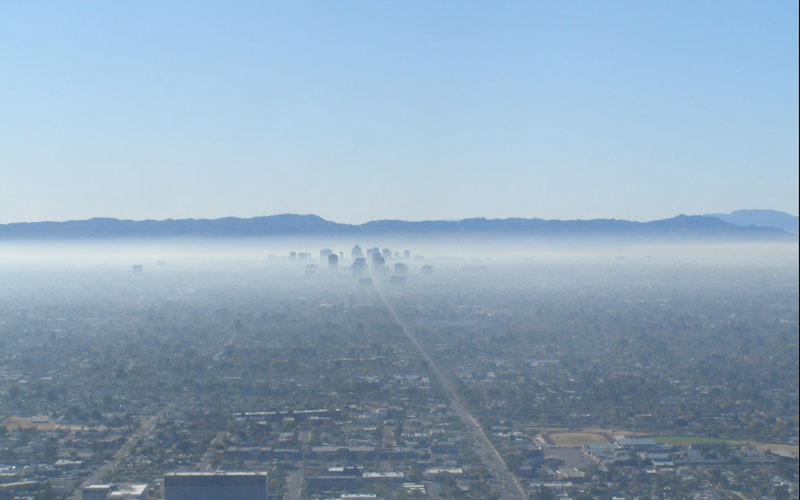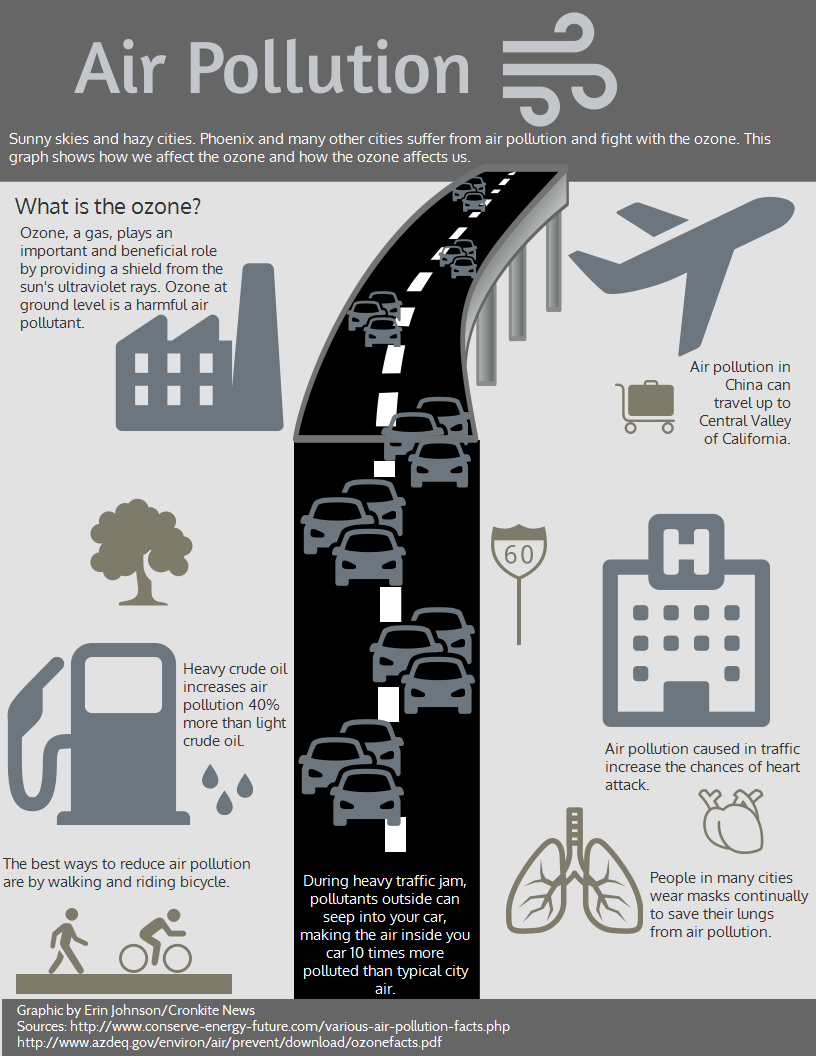
Haze obscures central Phoenix on Christmas morning in 2006. (Arizona Department of Environmental Quality Photo)
The Environmental Protection Agency’s reduction of its limit for ground-level ozone will put an additional seven Arizona counties out of compliance and pose a significant challenge, an official said Friday.
Eric Massey, director of the Arizona Department of Environmental Quality’s Air Quality Division, pointed to what he calls the state’s proximity to California, its summer sunshine and heat, and the number of older cars on its roads.
“We have a situation here in AZ where we’re going to have great difficulty implementing the change that EPA proposed,” Massey said.
Saying the change would improve public health, the EPA reduced its limit for ground-level ozone this week from 75 parts per billion to 70 parts per billion.
ADEQ reported that nine out of the 10 counties monitored have frequently exceeded the EPA’s new standard in recent years.
Two already exceeded the previous standard: Maricopa County, where the latest three-year average was 80 parts per billion, and Yuma County, where it was 77 parts per billion.
Massey said resources to address ozone pollution are limited in rural counties such as La Paz, where the latest three-year average of 72 parts per billion would meet the previous standard.
“We have many tools in our toolbox,” he said. “I just don’t know how effective they’re going to be.”
Ground-level ozone, often referred to as bad ozone, is caused by chemical reactions between nitrogen oxides and volatile organic compounds in sunlight, according to the EPA. Vehicle exhaust, electricity generation and gasoline vapors are among the major sources of these compounds.
The Clean Air Act created the ground-level ozone standard, and states are required to meet the act’s standards by reducing emissions, usually through regulations.
Glenn Hamer, president and CEO of the Arizona Chamber of Commerce and Industry, noted that California’s notorious air pollution is beyond Arizona’s control.
“There’s only so much a state can do. There are no fences that keep out ozone blowing over from California,” he said. “There are factors beyond our control.”
Hamer said lowering the ozone standard is an example of the federal government hindering states’ economies.
“We’re doing everything as a state right to improve our economy,” he said. “The problem is that, on the federal side, the actions by the federal government and specifically the EPA are making it more difficult for our economy to reach full speed.”
Sandy Bahr, director of the Sierra Club’s Grand Canyon Chapter, said the economy as well as people benefit from clean air.
“Protecting public health is good for the economy and, in fact, is essential to our economy,” she said. “You cannot have a sustainable economy if you’re making people sick with the way you do things.”
Massey said ADEQ’s main focus will be making drivers more conscientious.
“Given the ubiquitous nature of cars and the fact that they are the largest polluter in terms of these emissions, we’re going to be focusing a lot more of our time and energy on helping people understand how their driving habits impact air pollution,” he said.
